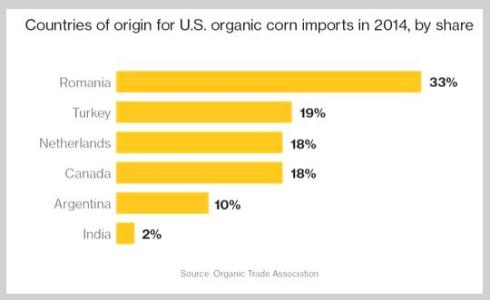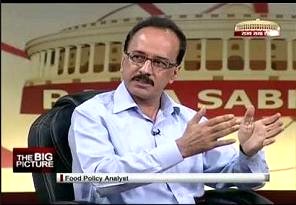In 2005 the Center for Science and Environment in Delhi checked the blood samples of the people of Punjab and found many different types of pesticides in their blood.
Two years later, the Economist reported: “In Punjabi villages, children and adults are afflicted by uncommon cancers. Some are going blind. The reason is massive and unregulated use of pesticides and other agricultural chemicals in India’s most intensively farmed state. According to an environmental report by Punjab’s government, the modest-sized state accounts for 17% of India’s total pesticide use. The state’s water, people, animals, milk and agricultural produce are all poisoned with the stuff”. (The article is now paywalled but can be sent via email if requested in the comments section)
 Sean Gallagher, zoologist, film-maker and journalist quoted the words of Chandra Bhushan, deputy director general of the Center for Science and Environment in 2013: “Punjab is now becoming a hotspot of cancer cases in India. There are a lot of studies which now link cancer in Punjab to use of pesticides. Punjab is one of the largest users of pesticides in India”
Sean Gallagher, zoologist, film-maker and journalist quoted the words of Chandra Bhushan, deputy director general of the Center for Science and Environment in 2013: “Punjab is now becoming a hotspot of cancer cases in India. There are a lot of studies which now link cancer in Punjab to use of pesticides. Punjab is one of the largest users of pesticides in India”
In 2017, research published in Nature Plants showed that farmers could slash their pesticide use without losses and quoted from a UNGA report denouncing the ‘myth’ that pesticides are necessary to feed the world.
Prof. Ian Boyd, chief scientific adviser to the UK government, pointed out that regulators around the world have falsely assumed it is safe to use pesticides at industrial scales across landscapes.
In March 2019, the British Medical Journal published Prenatal and infant exposure to ambient pesticides and autism spectrum disorder in children: a population based case-control study, BMJ 2019, 20 March 2019, which noted that common pesticides have been previously shown to cause neurodevelopmental impairment in experimental research. This study’s findings suggested that an offspring’s risk of autism spectrum disorder increases following prenatal exposure to ambient pesticides (including glyphosate, chlorpyrifos, diazinon, and permethrin) within 2000m of their mother’s residence during pregnancy, compared with offspring of women from the same agricultural region without such exposure.
The National Center for Biotechnology Information published a study later that year undertaken in California’s agricultural Salinas Valley by the Center for the Health Assessment of Mothers and Children of Salinas (CHAMACOS). It reported that many pregnant women are exposed and prenatal organophosphate pesticide (OP) exposure is associated with poorer cognitive function in Mexican American youth – learning, thinking, reasoning, remembering, problem solving, decision making, attention and behaviour problems
Exposure is widespread in the US population, predominantly through diet – pesticide residues on fruits and vegetables. Individuals living near farmland or living with family members working in agricultural settings are also exposed to pesticides from residues on clothing and drift from nearby fields.
How many more research papers will be published before decisive action is taken?
Pesticide sprays near Georgina’s home
In England over 10,000 rural residents have been calling on the Prime Minister via an online petition to ban all crop spraying of poisonous pesticides near residents homes, schools, and playgrounds and the words of many damaged individuals are recorded in an article by pesticide affected Georgina Downs.
Chandra Bhushan goes further. He concludes that this can no longer be allowed. We cannot allow chemicals to trespass in our body. We need a chemical trespass law that says we are not going to allow chemicals into our body to accumulate [where] they might cause numerous diseases in the future.
o

















Recent Comments